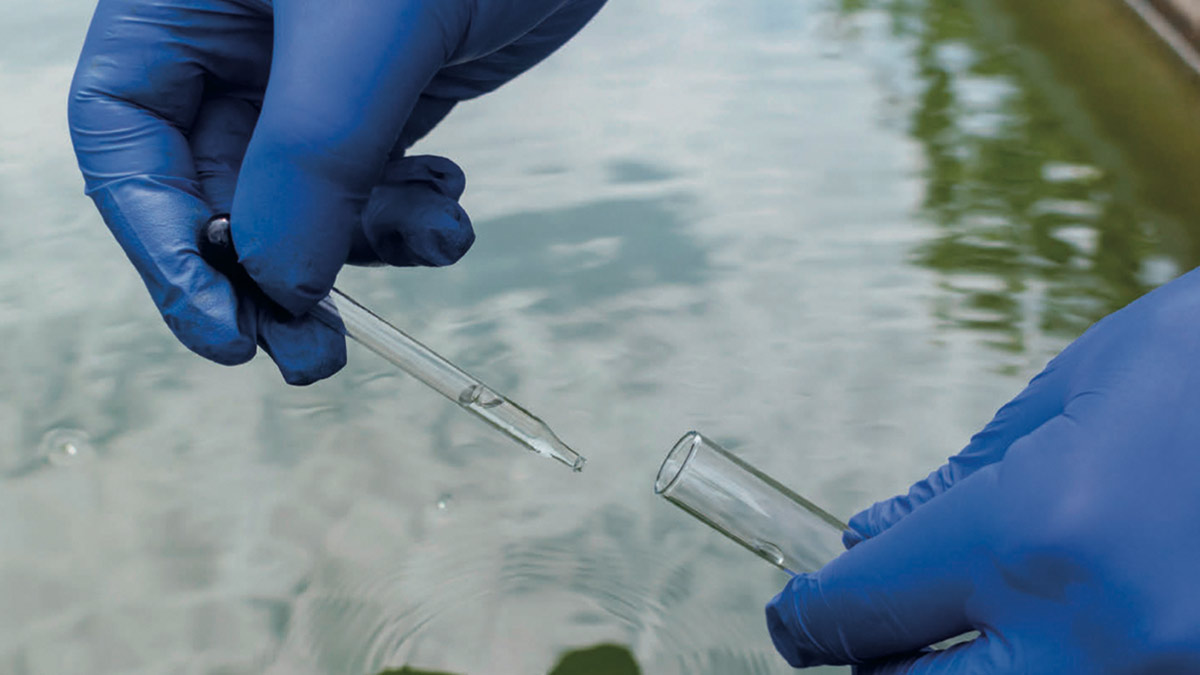Dr Des Corrigan examines what waste-water analysis can tell us about our drug-taking habits
Newspaper reports of a conference on ‘environment, health and wellbeing’ hosted by the HSE, EPA and ERSI referred to research by DCU’s Water Institute that tested water from various rivers in March 2022 for 16 different pharmaceuticals. The majority of detections were of Sulphamethoxazole and Venlafaxine, but Diclofenac, Metformin and Ciprofloxacillin were also found. The researchers pointed out that our wastewater treatment plants are not able to remove such compounds. This report ties in with the results of a 2015 EPA study on medicines detected in both Dublin and Galway bays. These included Carbamazepine, Mefenamic acid, Diclofenac, Trimethoprim and Gemfibrozil.
These two reports obviously raise concerns about the environmental impact of such bioactive molecules alongside the human health implications of the antibiotic residues, in particular, in terms of resistance. What also occurred to me was the fact that while DCU’s Water Institute and the EPA have the technology to detect low levels of drug molecules in water, Ireland is an outlier in Europe and globally in not using that analytical methodology to check for illicit drugs in wastewater entering into sewage treatment plants.
There is nothing particularly new about this approach because since 2007 the EU’s Drugs Agency in Lisbon has been the driving force behind using wastewater analysis to investigate levels of drug use. It helped to set up the first European multicity project looking at the potential of the technology to estimate drug use at community level. According to a 2016 publication from the Drugs Agency, detection of drug residues in wastewater from a given sewer network allows for a non-invasive, near real-time estimation of drug use that avoids problems with self-reported survey data that cannot capture the mix of drugs that are actually being used over a given time period or in a distinct geographical area.
This approach involves collecting representative samples of untreated wastewater that are then analysed for both known and new drugs or their metabolites. The parent drug is detected in the case of amphetamine, methamphetamine, ketamine and MDMA. For cannabis and cocaine, a urinary metabolite has to be used as the analytical marker because the parent molecule is not excreted intact. Heroin is particularly difficult to measure as its main metabolite monoacetylmorphine is unstable in wastewater, so morphine is the only viable alternative which is not ideal because of the therapeutic use of it and codeine (which also gives morphine as a metabolite).
A similar situation arises when estimating amphetamine-type stimulants (ATS) because detection of amphetamine could also indicate therapeutic use of amphetamines in ADHD or the use of selegiline to treat Parkinson’s or the misuse of methamphetamine. Because of the quite low concentrations in what is a chemically very complex sample matrix, a highly selective and sensitive analytical technique involving liquid chromatography linked to one or more mass spectrometers is necessary.
I have never had any problems with the concept of identifying a range of drugs or their excretion products in this way, thus giving an early warning of new emerging drugs or of the spread of existing drugs to new areas. I have been and remain sceptical of the ability of the methodology to estimate the numbers of users of a given drug in a defined population. The Drugs Agency Report maintains that this is achievable by back-calculation starting by multiplying the concentration of target residues by the daily flow rates of sewage. By applying a specific correction factor based on the average excretion rate of the metabolite or intact drug and the molecular mass ratio of the parent drug to its metabolite, the total consumption of a drug can be estimated. Daily values are divided by the number of people in the sewage treatment catchment area and expressed in daily amounts or doses per thousand population. This allows for comparisons between different areas, cities and countries and over time.
A Europe-wide network called the Sewage Analysis Core Group Europe or SCORE has tried to standardise the methodologies in order to establish a best-practice protocol. The network encompasses 24 European countries covering about 100 cities and towns, with Ireland and the UK notable by their absence. Results for 2022 have been published on the Drugs Agency web pages. Cocaine levels were highest in Belgium, the Netherlands, Portugal and Spain. Crack cocaine use can now be distinguished from powder cocaine use through the detection of a biomarker methylecgonidine formed by the pyrolysis of cocaine and also its metabolite ecgonidine. As a result, the highest levels of crack residues were found in Amsterdam and Antwerp.
Portugal the ‘poster boy’ for the decriminalisation/legalisation lobbies, features among the countries with the highest levels of MDMA and cannabis and also of ketamine. Others with that dubious distinction include Czechia, Spain, Belgium and the Netherlands for MDMA and cannabis. At weekends, the highest levels of party drugs such as cocaine, MDMA and ketamine are detectable whereas amphetamine, cannabis and methamphetamine detections were more evenly distributed over the whole week.
The SCORE network has extended beyond Europe, as a 2023 Report from the Australian Criminal Intelligence Commission on its national wastewater drug monitoring programme shows. As a result, it is known that Sydney has the highest levels of cocaine and MDMA compared to Melbourne which was highest for heroin and fentanyl. Overall, Australia had the third highest level of methamphetamine consumption out of 25 countries from Europe as well as the USA, South Korea and New Zealand that reported wastewater data.
The methodology cannot only be used for existing drugs but also for new molecules such as those designated New Psychoactive Substances (NPS) or ‘headshop’ drugs. Estimation of consumption and other epidemiological data can be more problematic for NPS since crucial pharmacokinetic data is often lacking. However, the method can alert hospitals to the identity of NPS used at festivals and in nightlife settings and predict changes in treatment needs. A paper in Water Research earlier this year describes three years of surveillance of wastewater for NPS in 16 countries. Synthetic cathinones (‘bath salts’) were found most often followed by phenethylamines, designer benzos (mainly etizolam) and ketamine analogues While the Drugs Agency report makes it clear that this method can provide useful data on the quantities of drugs used at a population level, it points out that it cannot tell us about the prevalence or frequency of use, the route of administration, the main classes of users or the purity of the drugs being used. However, given that we have the technology available to us in Ireland, I feel we are missing out on valuable information by not using it to detect illicit drug and NPS residues. It could add to the value of the drug testing at festivals, for example, by analysing the contents of the portable urinals at such events, giving early warning of new trends that might just save lives.
Dr Des Corrigan, Best Contribution in Pharmacy Award (winner), GSK Medical Media Awards 2014, is a former Director of the School of Pharmacy at TCD and won the Lifetime Achievement Award at the 2009 Pharmacist Awards. He was chair of the Government’s National Advisory Committee on Drugs from 2000 to 2011. He currently chairs the Advisory Subcommittee on Herbal Medicines and is a member of the Advisory Committee on Human Medicines at the IMB. He is a National Expert on Committee 13B (Phytochemistry) at the European Pharmacopoeia in Strasbourg and he is an editorial board member of the Journal of Herbal Medicine and of FACT — Focus on Alternative and Complementary Therapy.







